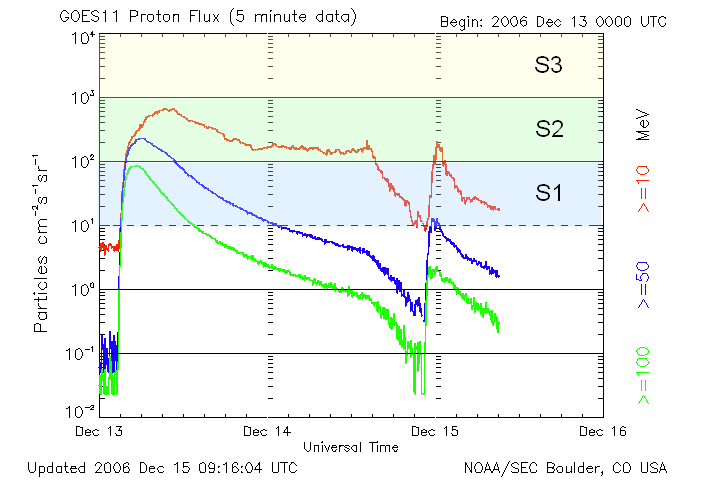Earth and satellites are attacked by a proton storm. The >10MeV proton flux exceeded the threshold of 10 particles several times since December 06. On December 09, the space shuttle was launched and brought more people to the international space station. They return on December 21.
According to the NOAA Space Weather scales , we are now (December 15) at the S1 level (The "S" is short for "Solar Radiation Storm", and the scale goes from 1 to 5), coming down from the S2 level. This scale is based on the >10MeV flux curve only, other physical quantities are not taken into account. The biological influence of an S1 event is described as "none".
From this point of view, the astronauts are not in danger. But not all physics is put into this picture. There are many other factors determining the level of danger. For example, the time duration of the exposure to high energy radiation is also relevant. Another example: a high energy particle impinges on the spacecraft, the ISS and produces secondary particles which can be more harmful than the primary particle.
The point is that the exact influence on the human health is not known yet. Just be careful when you are in space! I don't trust it.
The picture above shows the flux of protons with energies above 10 MeV, 50 MeV and 100 MeV. eV is a measure for energy. A particle flux denotes how many particles cross a certain surface per second. It's the satellite GOES that measures this proton flux.






